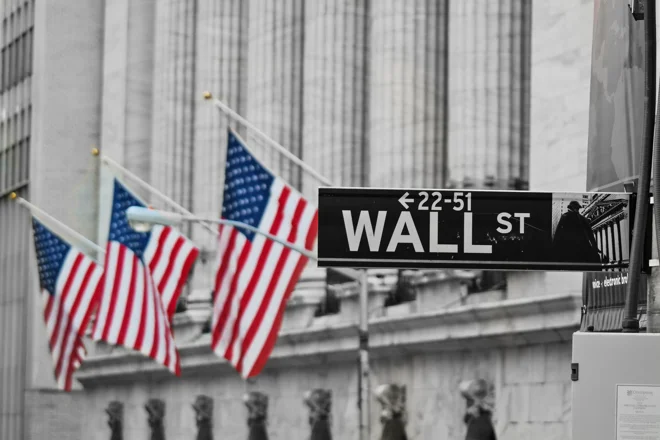The business of forecasting is a tricky one. This is because prediction and explanation are different things. Of course, this isn’t unique to the economy and financial markets: alchemists could predict that combining two elements would result in a third one, but couldn’t explain exactly why; geologists have great explanations for earthquakes, but can’t predict when the next one will happen. What’s unique in finance is that many of the relationships we deal with are behavioural. When a chemist forecasts the result of two substances reacting, the substances don’t know that the forecast exists. But if people knew that a recession looks set to happen next year, they’d cut back on spending immediately, bringing it forward and making the forecast inaccurate. Our mid-year update is going to be published tomorrow. Here’s a sneak preview of what we’re going to talk about.
Five questions are relevant for markets at this juncture:
Question #1 | The economy: is growth really peaking? The consensus view is that we’re either overheating or the best of the post-pandemic bounceback is already behind us. Either way, it looks a bit worrying. Our view is that policymakers want to ‘run the economy hot’ as there’s still considerable spare capacity. They’ll do this via government stimulus. We see limited overheating risks and believe growth is likely to be sustainably strong throughout the rest of the year. Cyclical recovery and reflation are still in play. We express our overweight allocation to risk in several ways by continuing to position portfolios to capture the growth from those areas of the market that should benefit as the world economy heals. These positions include a preference for: equities over bonds, particularly US and UK small cap stocks; credit risk (emerging markets and Asia) over low-yielding investment grade bonds; USD bonds (currency hedged) over EUR bonds for carry and diversification.
Question #2 | Inflation: what’s real and what’s fake news? There are two camps: those who believe we’re set for a secular pickup in inflation and those who believe disinflation will ultimately remain well entrenched. So inflation and disinflation risks have both increased. While we do see continued inflation in asset prices, we think consumer price inflation is likely to stay moderate following a temporary spike. Labour markets are only likely to put upward pressure on inflation gradually, which is why we think the major central banks won’t tighten their policies for some time. Over the long term, technological innovation and ageing populations are likely to continue to be disinflationary forces. Our central bank rate forecast is more dovish than market prices suggest. However, markets may stay focused on near-term inflation risks, contributing to high volatility in fixed income markets. This may affect long-duration assets, including tech stocks, every now and then.
Question #3 | The yield curve: is it telling us something? As the cycle matures, the yield curve should flatten as rate hikes approach. The market is pricing the first Fed rate hike for early 2023, with a probability of a hike as soon as 2022. While this is what tends to happen when economic activity shifts to mid-cycle, this time around we believe central banks aim to allow governments to fund their large-scale stimulus programmes at affordable rates – and for a protracted period of time. We’re more dovish than the market and think that, within a reasonable range, central banks will likely allow long-term bond yields to rise as long as this is because of faster growth, while anchoring short-term yields at very low levels. A steeper yield curve should also benefit selected banks and financials across equity and credit – particularly in the US, but to some degree also in the UK and euro area – but could possibly remain a drag for some emerging markets across asset classes.
Question #4 | Volatility: what could make it rise from here? One view is that market conditions could become more volatile either because things go wrong and there’s less policy ammunition or because it’s difficult to withdraw the stimulus and financial instability rises. We agree that volatility will probably rise from here. New virus variants could derail the recovery. But the main risk, to us, is too much of a good thing: stronger-than-expected growth and perhaps a more protracted period of inflation could lead to a repricing in the bond market, flattening yield curves as investors test central banks’ resolve to refrain from hiking. Rather than raising equity market volatility in and by itself, this could raise bond market volatility and affect risk assets as a consequence, especially at a time when discussions around the tapering of asset purchases will likely intensify. But it’s unlikely to happen in a straight line, with alternating periods of rising bond yields and risk asset outperformance.
Question #5 | The future: is the legacy of the pandemic underappreciated? Some market participants believe that long-term productivity is likely to remain subdued – and question whether it will ever pick up. In our view, Covid-19 has accelerated the shift from physical to digital. What’s more, breakthrough innovation, booming capital expenditure in technology and the fast adoption of new technologies are all coming through – often with a ‘green’ twist. This may boost productivity, earnings and economic growth. Even though early-cycle phases are generally associated with outperformance in assets leveraged to faster growth and beneficiaries of steeper yield curves, we’re positive on themes such as technological disruption and sustainability, and think the pandemic is likely to have accelerated this process. While getting the micro nuances right is just as important as spotting the wider macro trend, our longer-term forecast is more positive than the consensus view.
Meanwhile, it’s another busy week in terms of policy meetings and macro data…
The inflation rollercoaster: Expectations are for US CPI inflation to rise to 4.7%, with the core measure close to 3.5% (from 3% previously). But the sequential rate of change, while still above average, should start to moderate. A few categories, such as used cars and trucks, are driving the spike, which is why the Fed is likely to continue to describe it as transitory and refrain from hiking rates. Over the next few months, as the economy continues to heal, we expect an announcement on tapering the central bank’s asset purchases. Consumer and producer prices should rise at a faster pace in China too, but this is mostly due to the comparison with weak numbers last year. What’s more, the Chinese government is stepping up efforts to curb commodity prices, which should mitigate pipeline pressures. With the recovery still in its early phase, we expect the European Central Bank to continue to buy assets at a sustained pace. The central bank of Russia should hike rates once again.
Daniele Antonucci | Chief Economist & Macro Strategist





